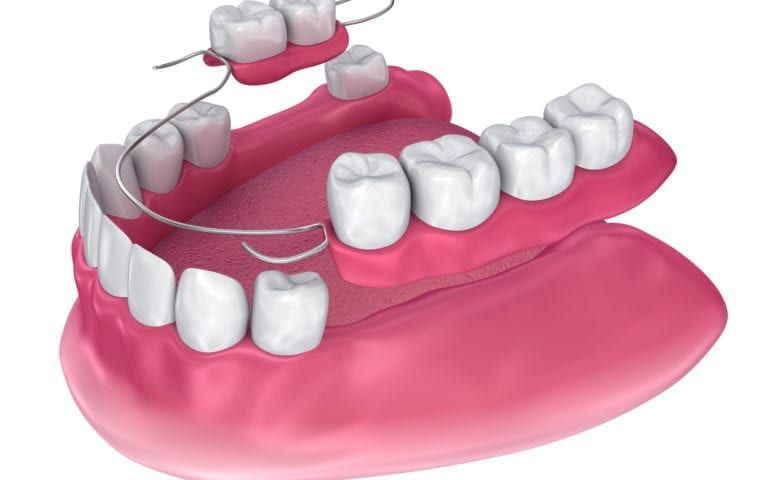What is a Partial?

Restorative dentistry has several treatments at its disposal to provide people with comprehensive, effective, and sustainable ways of restoring their teeth. Among the most popular varieties, dentures, implants, crowns, and bridges work to give people back functioning, aesthetically pleasing teeth that help restore the mouth to health. However, these methods can vary in their execution, because in the end, each treatment is personalized to the patient’s needs. For those with more than one missing teeth, partials offer a way to give people a natural-looking smile and help create a uniform set of teeth that will last for years. But what are partials? How do they work? Are they the best option for you? Let’s look at what partials are in its entirety:
How Partials Work
Partials, also called partial dentures, are a form of replacement teeth consisting of a gum-colored plastic base with porcelain or composite resin teeth attached to the base. They’re simply dentures, but with only one half of the complete set. Partials work in these cases to replace an entire upper or lower row of teeth that have been heavily damaged or removed due to infections, traumatic accidents, or diseases. These restorations can be made with a combination of materials, such as acrylic and metal, to form the partial. These devices are developed in a dental laboratory using CAD/CAM machines and software, making them completely customizable for the patient.
From the Dentist to Your Mouth
To prepare you for a partial, your dentist will give you a temporary denture in place of your partial denture to make adjustments and help the patients get used to wearing dentures for the first few weeks. When a dentist believes that partial dentures will work best and has received the final adjustments from the temporary partial, they’ll need to prepare the partial impressions. They’ll develop the impression using alginate, an impression material made out of seaweed and water. This material will be molded into the mouth for a small amount of time and once completed, the impression of your teeth will be made. Afterward, your dentist will send the impression off to their trusted dental laboratory to be designed and fabricated. Once your dentist receives the partial, you’ll receive your partial and have a complete set of teeth!
Do I Need Partial Dentures?
Partial dentures are made for those with more than one missing teeth. Partial dentures have a huge benefit to a person’s health; they help keep the teeth aligned, give people the ability to chew and speak properly and help maintain strength in the jawline. When a person misses one of their teeth, the adjacent teeth will attempt to compensate for the missing space, causing crooked teeth, which over time, can lead to infections in the teeth due to the difficulty in cleaning them. For those missing an entire set of their teeth, the muscles and bones within the mouth can degrade over time due to the lack of support. With partial dentures, the device can keep the mouth aligned, jawbone strong, and teeth remain healthy.
If you would like to learn about partials and other available treatments, please contact Dr. Scott T. Simpson at Appletree Dentistry, located in Tigard, OR, for more information.



